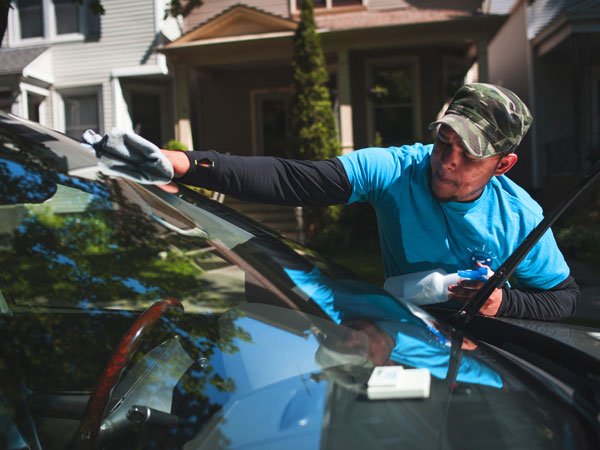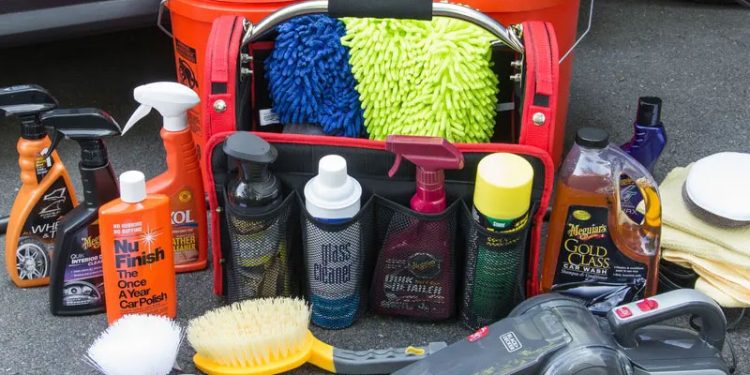Do you find auto detailing satisfying instead of labour-intensive? If so, you probably clean the exterior and interior of your vehicle by yourself.
The selection of auto detailing supplies is indeed extensive. Apart from choosing the best ones, car owners should also follow the basic cleaning guidelines to eliminate all types of contaminants. The most troublesome contaminants include road grime, dirt, mud, bird turds, sap, bug guts, etc.
The following tips will teach you how to use car detailing supplies to keep your vehicle pristine.
Clean your auto with wash soap
When using auto detailing supplies, the first tip to follow is cleaning the auto with car wash soap. The best cleaning your vehicle can get is washing by hand, which isn’t usually performed correctly by most drivers. When performed improperly, it can cause plenty of damage to the paint. Many vehicle owners opt for automatic car washes that use fresh water and soft foam brushes to remove contaminants and dirt.
If you decide to clean your auto in the driveway, you should forget about dish soap, which does more damage instead of protecting the surface. You should use a designated wash soap for vehicles, specially formulated to eliminate the contaminants found on cars without hurting the paint. There is a wide range of auto detailing supplies that fight water spots, road grime, bird droppings, and rust. Individuals are advised to use a multi-bucket strategy instead of using a single bucket for everything.

The purpose of using a multi-bucket strategy is to avoid cross-contamination, which occurs when using the same materials for every step of the cleaning process. The same cleaning items shouldn’t be used for detailing multiple purposes of the vehicle. The reason behind it is for contaminants not to move from one part of the car to the other.
An even better alternative is using three buckets. Use one bucket for the soapy solution, another for rinsing the dirty wash mitt, and the last one for cleaning the wheels. Bear in mind that the wheels, exhaust ports, and bumpers are the dirtiest areas to tackle.
Work your way from the top to the bottom
A common mistake vehicle owners make when using auto detailing supplies is cleaning in a random direction or addressing the dirtiest areas first. The right strategy to apply is starting from the top and working your way to the bottom. The lower parts of vehicles come in closer contact with road contaminants, and the last thing you want is for the filth to spread to the upper parts.
Start by washing the roof, glass, hood, and lid of the trunk. Individuals are recommended to wash and rinse small areas to make sure the soap doesn’t dry on the surface. The process should never be performed in direct sunlight, as heat increases the speed of drying of soap and water, which results in streaks and water spots. Find out what temperature is too hot to wash your car at.
Treat the tar
Another helpful tip to have in mind when using auto detailing supplies is treating the tar properly. Certain contaminants on vehicles cannot be cleaned with soap, which is why different cleaners are necessary for removing specific contaminants. Regular wash soap will only eliminate some of the contaminants, which are water-soluble.
Tar, however, must be cleaned with a special tar remover. After cleaning your auto with soap and water only, you will identify the rest of the contaminants that won’t be removed from the surface. Once you identify them, use the appropriate cleaner for their removal and have these areas re-washed.
Lubricate the hinges and latches
Lubrication is another aspect of the detailing process, but not many drivers pay attention to it. It’s incredibly important to keep the hood latch clean by lubricating it frequently with a suitable protectant. The same applies to the trunk latch. Your door hinges should be sprayed with lubricant, after which you should open and close the doors several times.
Moreover, hood hinges should be sprayed with white lithium grease at least once in a while. The lock cylinders should be occasionally taken care of as well. Nowadays, most autos come with remote locks, which get activated by pressing the key fob button. Hence, the chances are you never use the keyholes of your vehicle. You should insert the key to start up the locking mechanism, as this mechanism tends to lock up if not used.
Wax it
Waxing your vehicle has numerous benefits for protecting the exterior finish. Nevertheless, it should be performed properly to avoid doing any damage. The most important thing is to start off with a clean auto free of dust. If there is a layer of dust, you risk working it into the clearcoat, which gradually dulls the paint and wears the finish away. Follow this link, https://guidetodetailing.com/detailing-101/waxing-your-car/, to learn how to wax your vehicle like a pro.
The waxing process should be performed in a garage or in a shady area. The wax should be applied evenly while making sure it doesn’t seep into cracks, mouldings, jambs, etc. You’ll save hours of hard work by trying to remove the wax from the crevices. Also, wax isn’t supposed to get on black plastic parts, as it might stain them and cause permanent damage.
The carnauba content in the product is what makes the wax better. Car owners are suggested to apply a coat of sealant prior to applying several wax layers.
Don’t forget upholstery and carpets
As far as the interior is concerned, begin the detailing process by vacuuming up the dirt from the carpets without neglecting the areas under the seats. In case there are any stains, apply a small amount of carpet shampoo, brush them with a scrub brush, and dry them. Upholstery stains are best removed by using microfiber towels to wipe them.
To sum up
If you don’t mind spending your free time on car detailing, follow the tips above to do a great job!


